What did the Camden Station lower level passenger platform look like?
What does the location look like now?
What did the Camden Station lower level passenger platform look like?
What does the location look like now?
I’ll second that request. Wanswheel, can you supply photos of the interior of Camden Station as well as the platforms? I breezed through there in 1967 and remember it feeling very old, very Victorian, but I didn’t get any photos.
Ditto. I arrived there in 1954 on my high school senior trip from Cincinnati and we transferred to a bus to go to Ft Henry, Anapolis and then to Washington DC. Was into trains but not stations then. I seem to recall arriving on a lower track but 63 years leaves a lot of memories very faint.
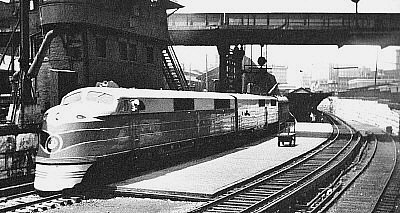
https://en.wikipedia.org/wiki/Camden_Station
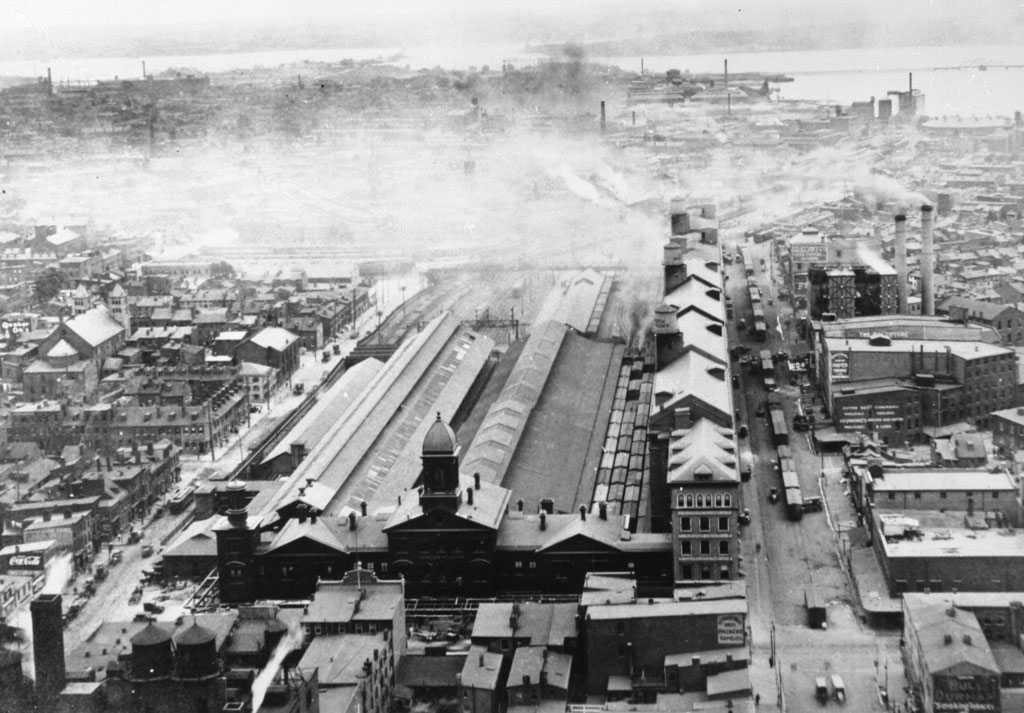
https://explore.baltimoreheritage.org/items/show/324#.WHbuEmciyM8


http://www.loc.gov/pictures/collection/hh/item/md0840/
Many thanks, wanswheel, for this fine series of pictures. Most informative.
I see my memory played me false regarding what the interior looked like.
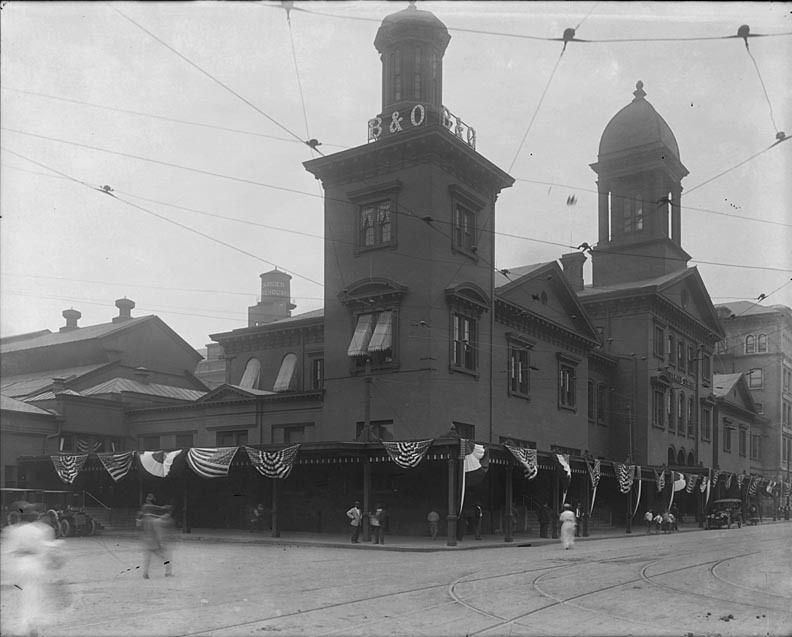
Excerpt from National Register of Historic Places nomination form (1977)
https://mht.maryland.gov/secure/medusa/PDF/Baltimore%20City/B-148.pdf
The interior of the Camden Station has lost much of its original grandeur. Renovations occurred frequently throughout the second half of the Nineteenth Century. In 1912, the most extensive interior remodeling of the interior occurred when B&0 officials spent $100,000 for exterior and interior improvements. Oak paneling and marble wainscotting was added to the main waiting room, as well as carved oak benches and elaborate cast iron ceiling light fixtures. A second waiting room south of the general waiting room was enlarged. Oak benches, a ticket and information booth and a newstand enhance the room. A coffered metal roof covers the area. This interior of the station although sadly neglected, remains today as it was in 1912.
Most of the first floor was for opeation of the station. The 2nd & 3rd floors housed the Divisional Offices and other administrative functions.
The 5 story structure with trucks parked against it on Eutaw Street was the main Agents office for the operations in Baltimore. Beyond the trucks, continuing down Eutaw Street is the Warehouse which was instrumental in handling B&O’s LCL business. The Warehouse still stands and is used for offices for the Baltimore Orioles whose ‘Oriole Park at Camden Yards’ was constructed just across Eutaw Street. The Warehouse is in back of right field.
Great pictures! When did the station close?
Picture from 2010
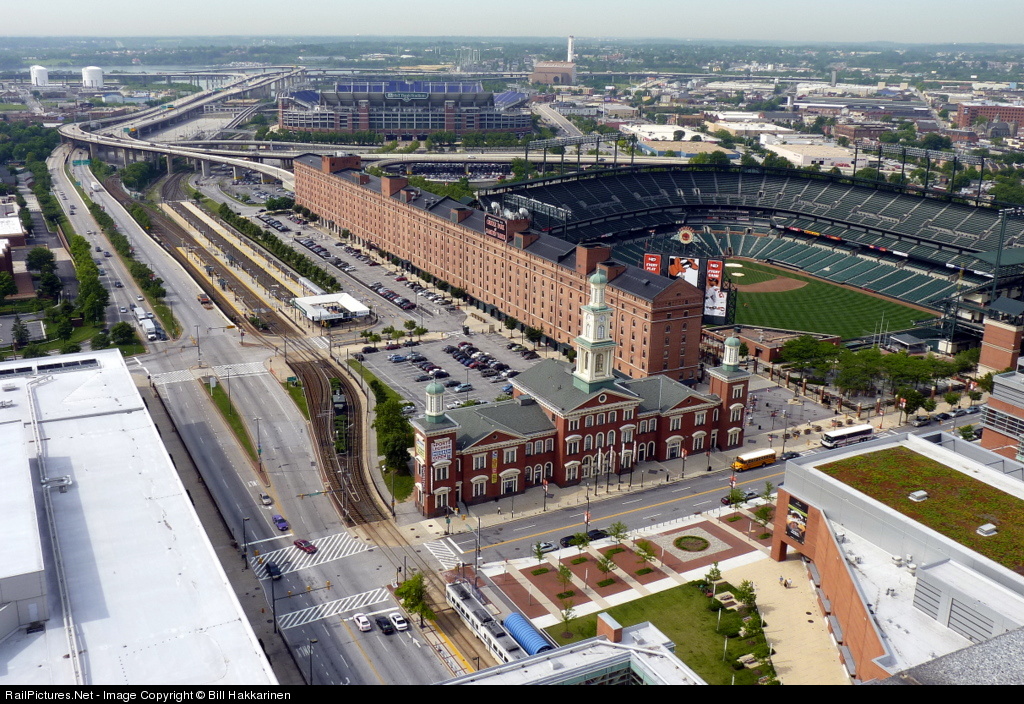
Poor Camden Station (today). It couldn’t look more un-authentic, less railroadesque, if it had “Plasticville Station” emblazoned over the entrance.
Truly the only thing missing is the former train shed that covered most of the parking lot behind the station. 5 tracks served the Upper Level and there were 3 tracks alongside the Warehouse that were used for LCL.
Coming from Cincinnati you would have gone through Washington Union Station before arriving in Baltimore. If you were on a New York continuation of the National Limited or the Diplomat you would have arrived Baltimore on the lower level tracks where the engines stopped at the mouth of the Howard Street tunnel. The upper level tracks were for trains that terminated or originated at Camden Station (mostly the commuter trains).
If you bussed from Camden Station to Ft. McHenry when traveling Fort Avenue, you would have crossed over a bridge that spanned a number of tracks of the B&O’s Locust Point Yard that nominally surrounded Ft. McHenry. Had your trip happened prior to 1950 you could have ridden the Baltimore & Annapolis Railway from Camden Station to Annapolis.
So, if I’m reading the pictures right, it was a single island platform about where the light rail tracks run now? Is the tunnel still intact?
And, again, great pictures! There wouldn’t by chance be a floor plan available, would there?
B&O did a great job as far as I was concerned back in 1954. For $52.00, we got three nights of hotel rooms (8 to a room) all meals and sightseeing. B&O provided a special passenger extra running as a second section of #12, which ran ahead of the National Limited all the way to Washington. The train carried all of the various Cincinnati Area school trips. My graduating class had about 42 kids and I think only 25 - 30 kids went from my school. We shared our coach with another school. Train had a dinner, about sixteen coaches and even an observation lounge car. My tour had us disembark at Washington DC for breakfast in the station coffee shop, then we reboarded (don’t know which one) a train for Baltimore and I think we arrived at Baltimore at upper level platforms. Would there have been a NB B&O train terminating at Baltimore leaving DC around 8 AM? We then boarded motor coaches to tour Ft McHenry and stopped at Carver Hall for lunch, then Annapolis and on back to DC. On return to Cincy, we had seats on the National Limited #1.
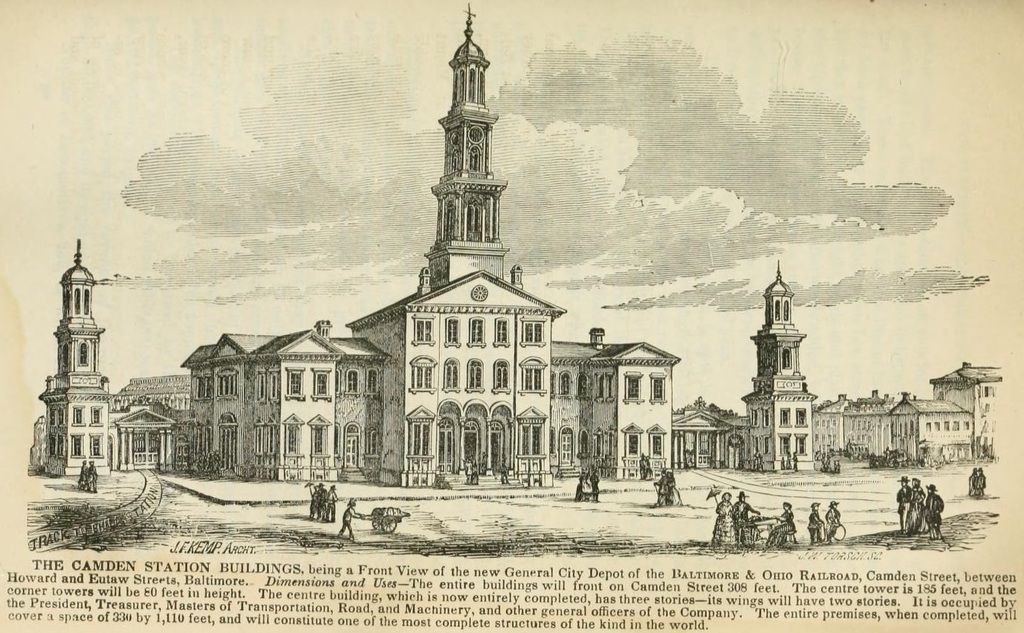
The street in front of the station is Camden Street. The Howard Street tunnel began ‘in the day’ at nominally the back of the left side lower height portion of the station as pictured in 2010. As can be seen, the tunnel today has been extended a couple of thousand feet beyond its original entrance to facilitate the parking, highway and light rail facilities. As can be seen light rail makes a jog around the new portion of the tunnel covering (I suspect the new tunnel covering is not constructed to a level that would support light rail). You are correct that there was a single island platform servicing the lower level, it was accessed by a stairway from the upper level (no ADA requirements at the time). In the 50’s there were actually 3 tracks through the tunnel. East & West passenger tracks and a gauntlet track for freight that followed the center of the tunnel for increased height clearance. Upon exiting the tunnel the gauntlet track would be routed to either the East or West bound tracks as necessary for operations.
In the 40’s-70’s to the left of the station was B&O’s Produce Terminal that in it’s heyday was populated by most all of the produce wholesalers who received fresh fruits and produce in car load lots and distributed it to retail grocery outlets around the Baltimore area.





Original towers looked more authentic. Tallest building in Baltimore then.
Are these pictures of the tunnel section? I’m given to understand that the Howard Street Tunnel had a passenger platform at some time in the past.
Am I thinking of another line, then?
When the tunnel was being constructed there was a plan to have a station inside the tunnel. That station was never built, however, when you walk into the tunnel, several hundred yards from the geographical South end of the tunnel you can see escavations that were made to allow for the never built station.
In operation, the lower of Camden Station had it’s platform begin at the geographical South end of the tunnel (right at Camden Street) and proceed for 10 to 15 car lengths with center mounted platform covering.